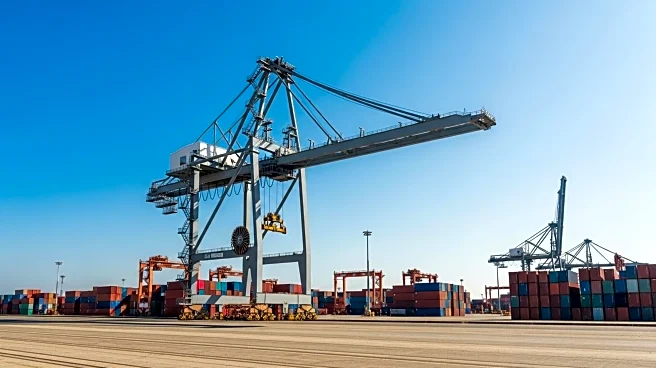What's Happening?
The Waterways Council, Inc. (WCI) is actively advocating for increased funding for the U.S. Army Corps of Engineers (USACE) to maintain and construct critical inland infrastructure, including locks and dams. Jen Armstrong, Vice President of Government Relations at WCI, recently discussed the historical evolution of USACE funding over the past 50 years with Maritime Reporter TV. The focus is on ensuring a functional and efficient system that supports not only inland waterway operators but also the broader U.S. economy. The funding path for USACE is complex, highlighting the need for strategic investment in infrastructure to sustain economic growth.
Why It's Important?
Efficient inland waterway infrastructure is vital for the U.S. economy, facilitating the movement of goods and resources across the country. The locks and dams managed by USACE play a crucial role in logistics, impacting industries such as agriculture, manufacturing, and energy. Adequate funding ensures these systems remain operational and can handle increasing demands. The advocacy by WCI underscores the importance of government investment in infrastructure to support economic stability and growth, potentially influencing policy decisions and budget allocations.
What's Next?
The ongoing discussions and advocacy efforts by WCI may lead to increased attention from policymakers regarding the funding needs of USACE. Potential next steps include legislative proposals or budget adjustments to address infrastructure requirements. Stakeholders such as industry leaders and government officials are likely to engage in further dialogue to prioritize these investments, considering the long-term benefits for the U.S. economy.
Beyond the Headlines
The push for enhanced funding also raises questions about environmental sustainability and the impact of infrastructure projects on local ecosystems. Balancing economic growth with ecological preservation is a critical consideration for future developments. Additionally, the role of technological advancements in improving infrastructure efficiency and resilience may become a focal point in these discussions.










